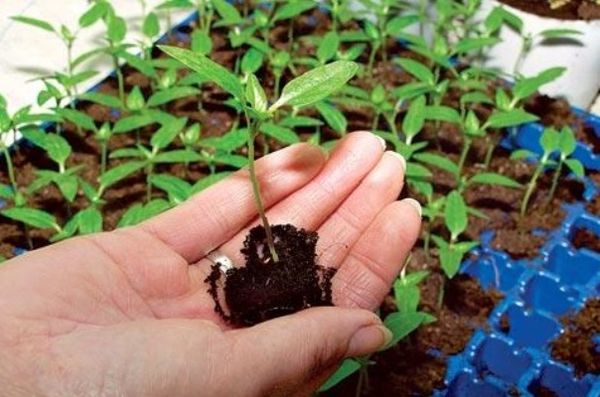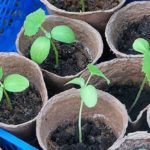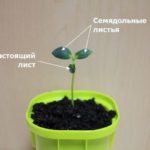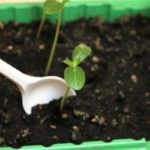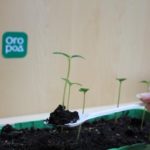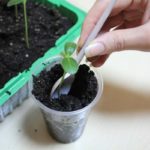Growing and picking cucumbers is an exercise that requires certain knowledge and skills, which has its own nuances. For planting this vegetable use two methods: reckless - germinated seeds are planted immediately to a permanent place; rassadny - seeds are first grown in separate containers.
The first method is preferable, it is less traumatic for tender seedlings, but in climatic areas, where frosts are possible in late May - early June, the second option is the only way to get the crop early.
Table of contents
What is the pick of cucumbers
Seeds for seedlings are usually sown in small containers. As the root system grows, the seedling becomes thinner and needs a transplant.
Gardeners and gardeners still have not come to a common opinion, a transplant is useful or harmful. Some claim that this procedure strongly injures the roots and inhibits the growth of escape. Others - that kind of shake for Zelentsov. It stimulates the appearance of additional roots and makes sprouts stronger, stronger, tougher.
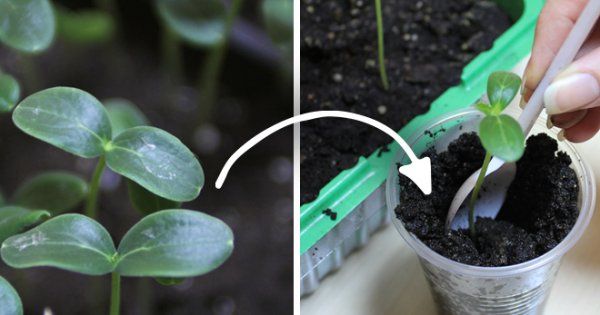
Despite the dual opinion, transplanting is sometimes necessary.
Why dive cucumbers
Cucumbers are quite delicate plants and any interference with the process of natural growth can affect development. therefore it is recommended to plant them immediately in the ground or in the dishes, a transplant from which is not required.
Except for the following cases:
- Unsuitable tare size. If the pot in which the seedlings grow does not fit in size, the shoots may feel bad, be ill, fall behind in growth. In too large a capacity, the roots may rot, as it is difficult to calculate the water for irrigation. In a small plant there will not be enough space and it will cease to develop properly, it can stretch, turn yellow. This also includes the case when many seeds are planted in one box. Over time, they become cramped and need to seat them. It is worth choosing the strongest sprouts.
- Lack of sunlight. Sometimes it comes time to plant seedlings in the ground, but in cold and rainy weather it can not be done. She begins to strongly stretch. In this case, it makes sense to make a picking, deepening with the bottom of the escape. The procedure will slow down growth a little, and additional roots will grow on the stem that is underground, which will provide better nutrition in the future.
- Incorrect calculation of the time of planting seedlings in the ground. Or inappropriate weather. Seedlings in the ground can be planted 30 days after germination. Soil temperature should not be below 16 degrees.Otherwise, the young shoots will take a long time to take root. As a result, the plants will be stunted, and the crop will appear much later than expected. If the seeds are planted much earlier than expected, you can slow down the growth of shoots with a pick.
- Infectious or fungal diseases. When they appear, you need to immediately transplant the Zelentsy, completely replacing the ground. Otherwise, there is completely lose the entire crop.
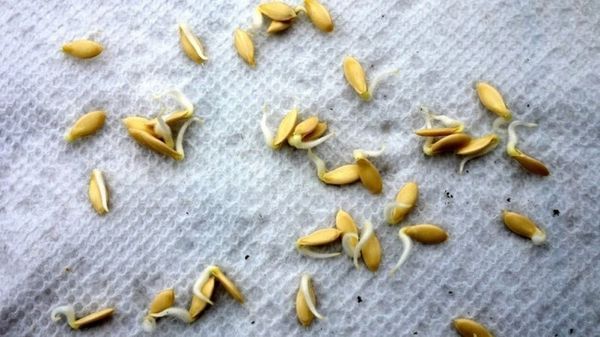
Advantages and disadvantages
Diving cucumbers has both advantages and disadvantages, so before planting seeds it is worth considering all the nuances of growing seedlings.
Benefit:
- The method makes it possible to choose the strongest and most viable shoots. In the future they will give a good harvest.
- Space saving. A large number of seeds are planted in one box, and then the best seedlings are selected. Weak ones are rejected.
- After transplanting a young plant, all the nutrients get to him alone.In conjunction with the packaging, suitable for the size, and quality soil it effectively stimulates growth and development.
- The pick contributes to the growth of a powerful root system, which allows greengrass to take maximum nutrients from the earth.
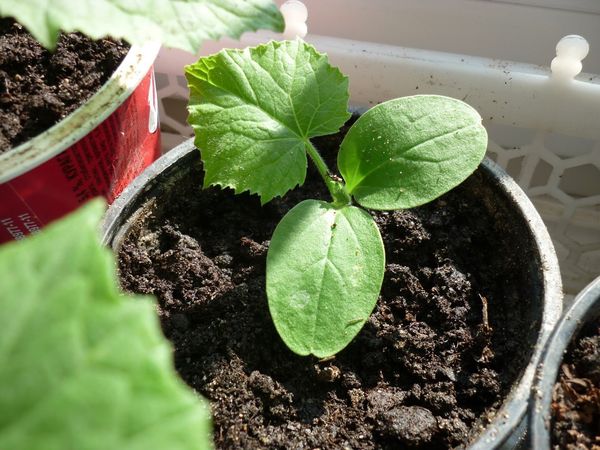
Harm picks can bring in two cases:
- Transplantation of initially weak seedlings, which will lead to the death of most of the shoots.
- Violation of technology.
That is why gardeners try to do without this procedure and plant the crop immediately to a permanent place in the ground or grow seedlings in a container, the volume of which is enough for the normal development of young shoots without transplantation.
Very good for this purpose peat cups. Plants do not need to get out of them, and immediately planted in the ground. Under the action of moisture, they disintegrate and will serve as additional fertilizer.
When to do seating
In order for the sprouts to receive the least damage during a pick, it is important to know when this can be done.Transplantation is carried out in the period of opening of the seed leaves or in the period of appearance of 1-2 true leaves.
- Peat pots are very well suited for picking
- Picks are performed after the appearance of 1-2 true leaves.
The fact is that the root system of a young plant is not yet developed enough to receive severe damage. Therefore, seedlings take root better. The seedling in this case is strong and strong, which will ensure a good harvest in the future.
How to dive at home
For the process to be successful, you must follow the rules. Seedlings before diving need to prepare, and after transplant properly care for her.
Training
You can buy land at a specialty store or do it yourself:
- sod land
- peat
- sawdust
- humus
All carefully mix. Glasses filled with soil, pour water and leave for a day to the ground settled. Then you can begin to dive.
Special features
- With the help of a plastic spatula, the seedling goes
- A transplant is required along with an earth ball
- Transplantation in the prepared hole and ground powder
- Using a plastic spatula or spoon, carefully remove the greens from the ground together with a little lump of earth. This is necessary in order to less injure weak roots. You can carefully hold the seedlings for leaves. You can not strongly pull up, there is a risk of damage.
- In the ground, make a recess and gently lower a sprout into it.
- Little water the transplanted seedling, trying to let a jet of water along the stem. This will allow the roots to finish.
- To fill up with the earth, slightly having deepened escape. It is easy to press it with your fingers at the base. It is necessary that the roots have more intimate contact with the soil, which will allow the seedlings to adapt more quickly and grow.
Frequently forgotten rules
- Prepare seedlings for the upcoming procedure. The soil in the box is plenty of moisturize. Removing sprouts from dry, dense soil is difficult and there is a risk of damaging them.
- Do not bend the roots of the seedling, if they are too long. Instead, you need to pinch the excess with your fingers. This will trigger the growth of new side roots.
- Weak, damaged or diseased seedlings should not be subjected to this procedure, they may not settle down and die. If the culture is valuable, and the seed is small, it is worth resorting to such a method of cultivation, which does not require transplanting plants.
- Proper care for seedlings after the procedure. They are weak at this time and need special care. Especially in the first 2-3 days.
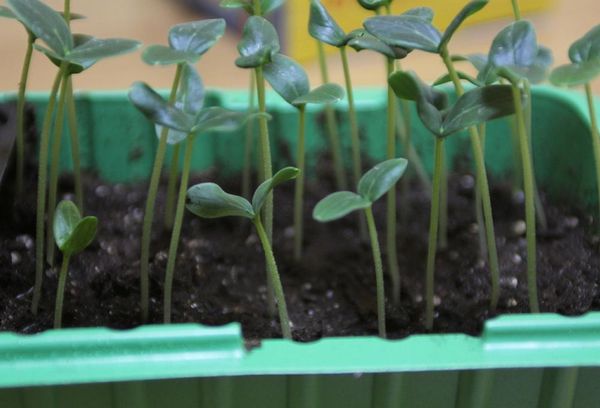
How to care for young shoots
- The temperature in the room where the seedlings are located should be within 18-20 degrees. And the humidity is above average. Such conditions will help the shoots to take root and grow stronger.
- It is impossible to prevent the appearance of drafts, because sprouts do not like excessive wind and cold.
- A common problem is the lack of light for young plants in the spring. Shoots begin to turn yellow and stretch. To avoid this, it is necessary to additionally highlight greens, setting the lamp at a distance of 5-10 cm from the shoots. A light day for cucumber seedlings should be at least 7-10 hours. Conventional incandescent bulbs are not suitable for highlighting seedlings at home. They have a small radiation spectrum, because of which their light will not be enough.They also give off too much heat, the plants will just brew.
For these purposes, fluorescent, LED, phytolamps are well suited. They are not heated in the process of work, which allows you to bring them close to the plants.
- It is important to monitor the soil moisture. It should not be allowed to bury or dry out, the ground should be moderately wet. The optimal amount of watering - 1-2 per week. You can use only water at room temperature.
- After a few days you can feed the seedlings specialized complex fertilizer. You can prepare the nutritional mix yourself.

Specialized complex fertilizer - per 10 liters of water:
- ammonium nitrate - 7 g
- superphosphate - 1 g
- potassium sulphate - 8 g
Top dressing can be made simultaneously with watering according to the following scheme:
- 5-7 days after transplant
- In 2 weeks
- 1-2 days before disembarking to a permanent place
Growing cucumbers is laborious. They can hardly be called unpretentious. But if you take a responsible approach to this activity, you can get a great harvest.
